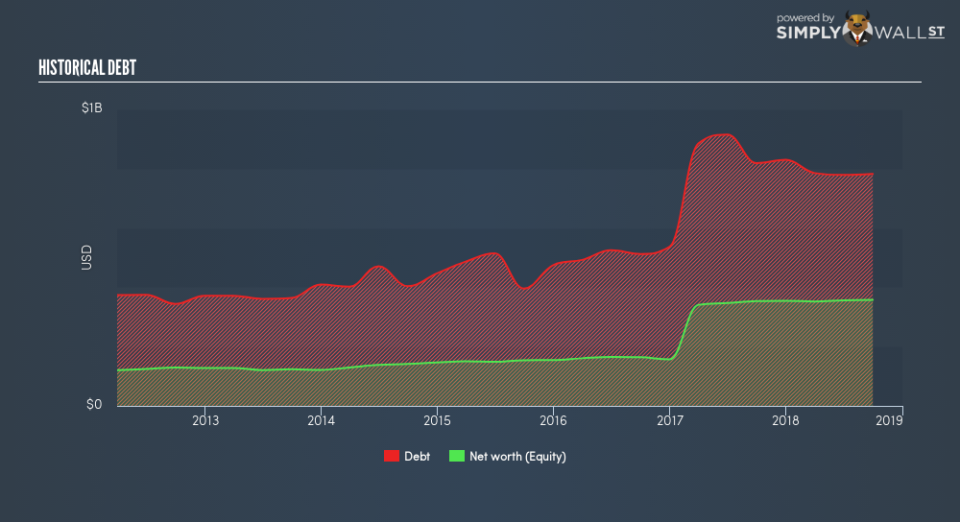Understated Factors To Consider Before Investing In Bar Harbor Bankshares (NYSEMKT:BHB)

As a small-cap bank stock with a market capitalisation of US$374m, Bar Harbor Bankshares’s (NYSEMKT:BHB) risk and profitability are largely determined by the underlying economic growth of the US regions in which it operates. Since a bank profits from reinvesting its clients’ deposits in the form of loans, negative economic growth may lower deposit levels and demand for loan, adversely impacting its cash flow. Following the Financial Crisis in 2008, a set of reforms termed Basel III was enforced to bolster risk management, regulation, and supervision in the financial services industry. The Basel III reforms are aimed at banking regulations to improve financial institutions’ ability to absorb shocks caused by economic stress which could expose banks like Bar Harbor Bankshares to vulnerabilities. Unpredictable macro events such as political instability could weaken its financial position which is why it is important to understand how well the bank manages its risk levels. Low levels of leverage coupled with sufficient liquidity may place Bar Harbor Bankshares in a safe position in the face of adverse headwinds. We can measure this risk exposure by analysing three metrics for leverage and liquidity which I will take you through today.
See our latest analysis for Bar Harbor Bankshares
Want to help shape the future of investing tools and platforms? Take the survey and be part of one of the most advanced studies of stock market investors to date.
Is BHB’s Leverage Level Appropriate?
Banks with low leverage are better positioned to weather adverse headwinds as they have less debt to pay off. A bank’s leverage may be thought of as the level of assets it owns compared to its own shareholders’ equity. While financial companies will always have some leverage for a sufficient capital buffer, Bar Harbor Bankshares’s leverage ratio of less than the suitable maximum level of 20x, at 9.96x, is considered to be very cautious and prudent. This means the bank exhibits very strong leverage management and is well-positioned to repay its debtors in the case of any adverse events since it has an appropriately high level of equity relative to the debt it has taken on to remain in business. Should the bank need to increase its debt levels to meet capital requirements, it will have abundant headroom to do so.
What Is BHB’s Level of Liquidity?


As abovementioned, loans are quite illiquid so it is important to understand how much of these loans make up the bank’s total assets. Usually, they should not be higher than 70% of total assets, which is the case for Bar Harbor Bankshares’s ratio at 69%. This is a reasonable ratio and suggests that slightly over half of the bank’s total assets are tied up in the form of illiquid loans, striking an appropriate balance between liquidity and interest income.
What is BHB’s Liquidity Discrepancy?
Banks profit by lending out its customers’ deposits as loans and charge an interest on the principle. These loans tend to be fixed term which means they cannot be readily realized, however, customer deposits are liabilities which must be repaid on-demand and in short notice. The discrepancy between loan assets and deposit liabilities threatens the bank’s financial position. If an adverse event occurs, it may not be well-placed to repay its depositors immediately. Relative to the prudent industry loan to deposit level of 90%, Bar Harbor Bankshares’s ratio of over 103% is higher, which puts the bank in a risky position due to the negative liquidity disparity between loan and deposit levels. Essentially, for $1 of deposits with the bank, it lends out more than $1 which is unsustainable.
Next Steps:
Passing two of the three checks for liquidity and leverage demonstrates a relatively sensible operational risk management by the bank. This means it is well-positioned to meet its financial obligations in case of any unforeseen and adverse macro events. Today, we’ve only explored one aspect of Bar Harbor Bankshares. However, as a potential stock investment, there are many more fundamentals you need to consider. There are three key factors you should look at:
Future Outlook: What are well-informed industry analysts predicting for BHB’s future growth? Take a look at our free research report of analyst consensus for BHB’s outlook.
Valuation: What is BHB worth today? Has the future growth potential already been factored into the price? The intrinsic value infographic in our free research report helps visualize whether BHB is currently mispriced by the market.
Other High-Performing Stocks: Are there other stocks that provide better prospects with proven track records? Explore our free list of these great stocks here.
To help readers see past the short term volatility of the financial market, we aim to bring you a long-term focused research analysis purely driven by fundamental data. Note that our analysis does not factor in the latest price-sensitive company announcements.
The author is an independent contributor and at the time of publication had no position in the stocks mentioned. For errors that warrant correction please contact the editor at editorial-team@simplywallst.com.

